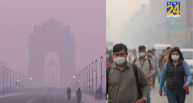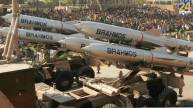Delhi, a city already grappling with its annual environmental crisis, found itself shrouded in a thick, toxic smog as the air quality plunged to severe levels on Friday. The air quality index soared to nearly 500, surpassing the World Health Organization’s (WHO) safe limit by 100 times.
The deterioration in air quality over the past week was primarily attributed to a surge in field burning by farmers in the neighboring states of Haryana and Punjab during the crop planting season. Unfavorable winds transported these pollutants into Delhi, where a drop in temperatures trapped the particulate matter, exacerbating the situation.
In response to the worsening conditions, the government took swift actions, including the closure of schools and a ban on non-essential construction activities. On a concerning note, Punjab saw a staggering 740% increase in farm fires in a single day, with over a thousand reported incidents. Other significant contributors to the city’s pollution include vehicle emissions, ongoing construction projects, and waste incineration at disposal sites.
Expressing deep concern, the Delhi Lieutenant Governor convened a meeting with Chief Minister Arvind Kejriwal and Environment Minister Gopal Rai to address the crisis.
Various measures have been put in place to combat the pollution, such as the activation of stage III of the Graded Response Action Plan (GRAP), the deployment of anti-smog guns in multiple locations, and the relaunch of the ‘Red light on, Gaadi off’ campaign.
Stage III of the GRAP enforces a complete ban on construction and demolition activities, while the Central Pollution Control Panel directed a halt on non-essential construction work, stone crushing, and mining in Delhi-NCR. Additionally, restrictions were placed on the operation of BS III petrol and BS IV diesel four-wheelers in specific regions.
In a proactive move, the Delhi administration deployed anti-smog guns in critical areas like Anand Vihar, Kashmiri Gate ISBT, ITO, Pusa Road, Jahangirpuri, Narela Industrial area, and Burari Crossing to combat the worsening air quality.













